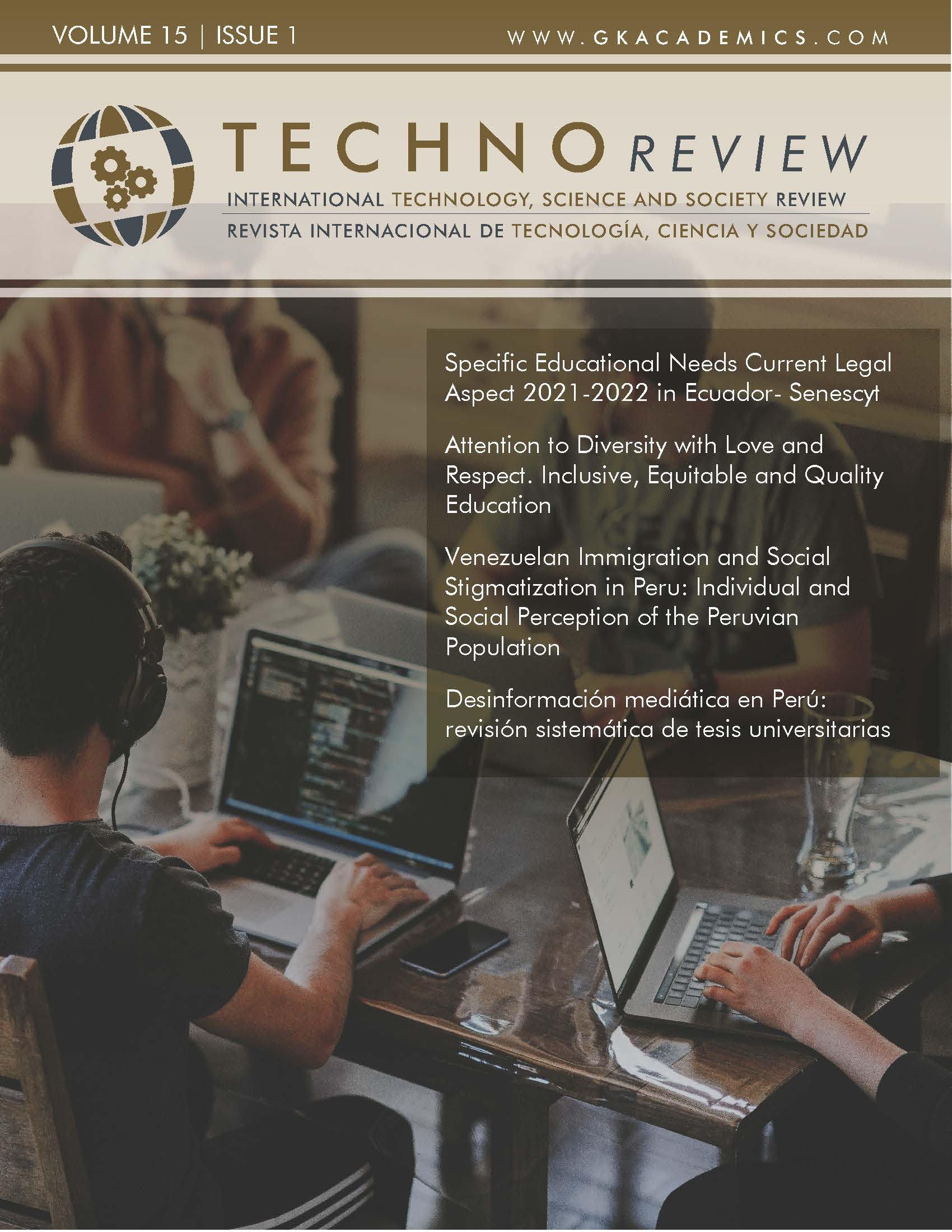Innovative marketing strategies in dentistry: The potential of the doll as a brand image
DOI:
https://doi.org/10.37467/revtechno.v15.5095Palabras clave:
Brand image, Corporate mascot, Sport mascot, Dental Offices, Industrial designs, Target audiences, MarketResumen
The creation of 3D-printed corporate mascots is a complex scientific and social process. It requires the use of 3D printing technologies, engineering, and design, while taking into account ethical, legal, and moral considerations. Creating a unique and personalized mascot allows for an emotional connection with patients. Mascots have the potential to have a significant impact on businesses, including dental clinics. In this sense, they help to create a strong and memorable brand identity. This potential represents an opportunity to use corporate mascots as a marketing element, especially on social media as a distinctive element from the competition.
Citas
Aaker, D. A., & Shansby, J. G. (1982). Positioning your product. Business Horizons, 25(3), 56-62.
DOI: https://doi.org/10.1016/0007-6813(82)90130-6
Ahmad, A., & Thyagaraj, K. S. (2017). An empirical comparison of two brand personality scales: Evidence from India. Journal of Retailing and Consumer Services, 36, 86-92.DOI: https://doi.org/10.1016/j.jretconser.2017.01.006
Apostolopoulou, A., Papadimitriou, D., & Damtsiou, V. (2010). Meanings and functions in Olympic consumption: A study of the Athens 2004 Olympic licensed products. European Sport Management Quarterly, 10(4), 485-507.
DOI: https://doi.org/10.1080/16184742.2010.502746
Bennett, D. E., & Thompson, P. (2016). Use of anthropomorphic brand mascots for student motivation and engagement: A promotional case study with Pablo the penguin at the university of Portsmouth library. New Review of Academic Librarianship, 22(2-3), 225-237.
DOI: https://doi.org/10.1080/13614533.2016.1162179
Botella, M., & Centre d'Estudis Olímpics (2002). Barcelona : l'herència dels Jocs (1992-2002). https://ddd.uab.cat/record/44228
Bottini, C., Khajavi, M. J., & Gonzalez, J. C. (2018). Comparing the effects of animated and static logos on viewers' attitudes toward a brand: A pilot study. The International Journal of Visual Design, 12(3), 1-9.
DOI: https://doi.org/10.18848/2325-1581/CGP/v12i03/1-9
Cham, T.-H., Lim, Y.-M., & Sigala, M. (2022). Marketing and social influences, hospital branding, and medical tourists' behavioral intention: Before- and after-service consumption perspective. International Journal of Tourism Research, 24(1), 140-157.
DOI: https://doi.org/10.1002/jtr.2489
Esmaeilpour, F., & Nashtaee, M. S. (2020). Food advertising and childhood obesity: Examining food type, brand mascot physique, health message, and media. Routledge.
DOI: https://doi.org/10.4324/9780429344435
Eyni, A., Thongpapanl, N., Ashraf, A. R., & Wang, K.-Y. (2023). The logo "visual thickness effect": When and why it boosts brand personality. Journal of Consumer Behaviour. DOI: https://doi.org/10.1002/cb.2133
Fournier, S., & Alvarez, C. (2012). Brands as relationship partners: Warmth, competence, and in-between. Journal of Consumer Psychology: The Official Journal of the Society for Consumer Psychology, 22(2), 177-185. DOI: https://doi.org/10.1016/j.jcps.2011.10.003
Golossenko, A., Pillai, K. G., & Aroean, L. (2020). Seeing brands as humans: Development and validation of a brand anthropomorphism scale. International Journal of Research in Marketing, 37(4), 737-755. DOI: https://doi.org/10.1016/j.ijresmar.2020.02.007
Harun, A., Razak, M. R. R. A., Rahim, R. A., Radzuan, L. E. M., & Bakar, A. S. A. (2017). The Importance of Corporate Brand Character: Case Study of Malaysian Bank Mascots. https://doi.org/10.1166/asl.2017.9621
Ilicic, J., & Brennan, S. M. (2023). Angelic brand name priming: saintly branded food influences brand healthfulness perceptions. European Journal of Marketing, 57(4), 1099-1129. DOI: https://doi.org/10.1108/EJM-09-2021-0719
Iva Adeline, B., Nesya Natalie Kay, H., Wei-Han Tan, G., Lo, P.-S., Chaw, L.-Y., & Ooi, K.-B. (2023). A relook at the mobile advertising landscape: What are the new consumer expectations in the retailing industry? Telematics and Informatics, 79(101953), 101953. DOI: https://doi.org/10.1016/j.tele.2023.101953
Kim, S. S., Yoon, S., & Kim, Y. (2011). Competitive positioning among international convention cities in the east Asian region. Journal of Convention & Event Tourism, 12(2), 86-105.
DOI: https://doi.org/10.1080/15470148.2011.566760
Ko, Y. J., Asada, A., Jang, W. (eric), Kim, D., & Chang, Y. (2022). Do humanized team mascots attract new fans? Application and extension of the anthropomorphism theory. Sport Management Review, 25(5), 820-846. DOI: https://doi.org/10.1080/14413523.2021.2014184
Lund, D. B., & Smith, A. E. (2015). Determining consumer preferences for sales promotion techniques via conjoint analysis. In Proceedings of the 1982 Academy of Marketing Science (AMS) Annual Conference (pp. 571-571). Springer International Publishing. DOI: https://doi.org/10.1007/978-3-319-16946-0_163
Morden, A. R. (1987). Market segmentation and corporate control. Management Decision, 25(6), 36-40.
DOI: https://doi.org/10.1108/eb001472
Olivé Saperas, J., Olivés Salvadó, J., Bennasar Félix, M. I., & Badia Armengou, X. (2012). Report: Cobi, escola bressol pública municipal al Poblenou de Barcelona. L'informatiu, 334, 58-67. http://hdl.handle.net/20.500.12251/937
Palladino, A., Lee, M., & Zhou, X. (2022). An analysis of Olympic mascot design toward attitude and purchase intention. International Journal of Sport Communication, 15(3), 190-196. DOI: https://doi.org/10.1123/ijsc.2022-0052
Prakoesw, C. R. S., Hidayah, N., & Dewi, A. (2022). A Scoping Review of Research on Brand Image, Marketing Mix, Patient Hospital Satisfaction, And Loyalty in Indonesia. Resmilitaris, 12(2), 964-983. https://resmilitaris.net/menu-script/index.php/resmilitaris/article/view/162
Su, Q., & Li, F. (sam). (2023). How cute pets affect relationships with tourism destinations: A moderated mediation model. Tourism Management, 99(104782), 104782.
DOI: https://doi.org/10.1016/j.tourman.2023.104782
Wan, E. W., & Chen, R. P. (2021). Anthropomorphism and object attachment. Current Opinion in Psychology, 39, 88-93. DOI: https://doi.org/10.1016/j.copsyc.2020.08.009
Wattanacharoensil, W., Kantamara, S., & Muangasame, K. (2021). An investigation of the Kumamon and Sukjai mascots on destination branding. Journal of Place Management and Development, 14(2), 201-221. DOI: https://doi.org/10.1108/JPMD-11-2019-0095
Wenner, L. A. (1994). The dream team, communicative dirt, and the marketing of synergy: usa basketball and cross-merchandising in television commercials. Journal Of Sport & Social Issues. DOI: https://doi.org/10.1177/019372394018001003
Xu, J. (bill), Pratt, S., & Yan, L. (2023). Residents' engagement in developing destination mascots: a cognitive appraisal theory-based perspective. Journal of Travel & Tourism Marketing, 40(2), 151-168. DOI: https://doi.org/10.1080/10548408.2023.2227858
Descargas
Publicado
Cómo citar
Número
Sección
Licencia
Aquellos autores/as que publiquen en esta revista, aceptan los términos siguientes:
- Los autores/as conservarán los derechos morales sobre la obra y cederán a la revista los derechos comerciales.
- Transcurrido un año desde su publicación, la versión del editor pasará a estar en acceso abierto en la web de la editorial, pero la revista mantendrá el copyright de la obra.
- En el caso de que los autores deseen asignar una licencia abierta Creative Commons (CC), podrán solicitarla escribiendo a publishing@eagora.org







